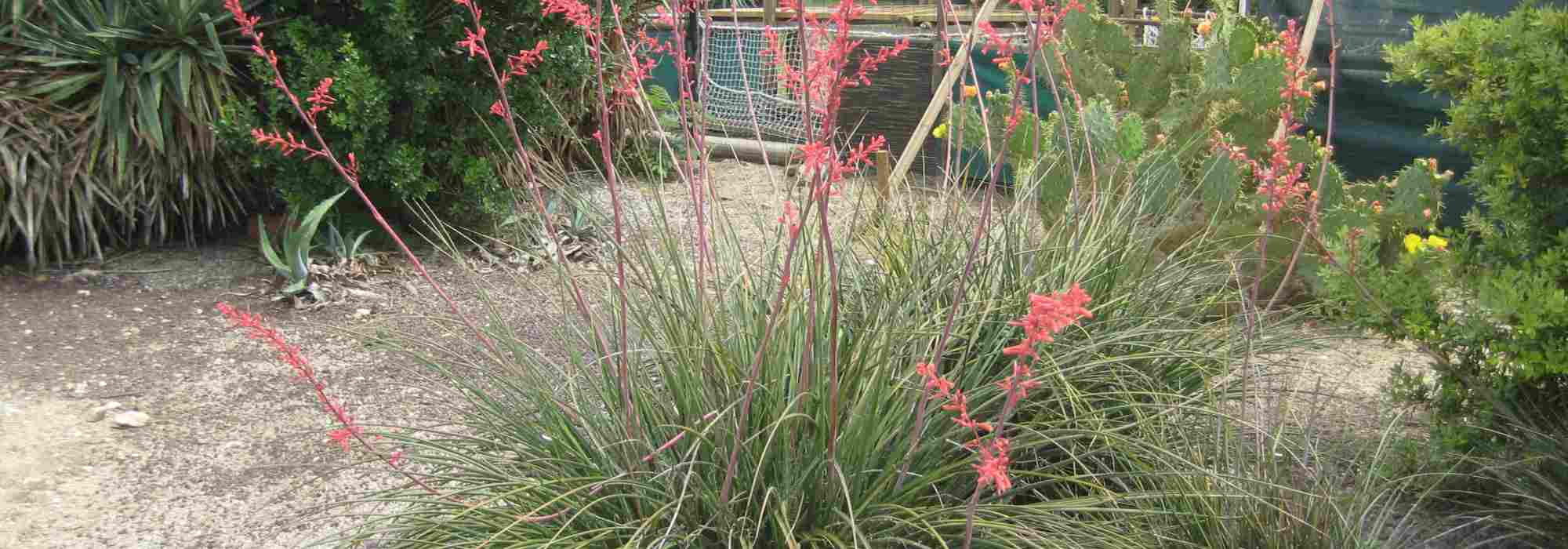
Hesperaloe - Red Yucca: planting, growing, and care
Contents
Hesperaloes in a nutshell
- Hesperaloe is a hardy perennial succulent, drought-resistant and native to the desert regions of the southern United States and Mexico.
- It forms a dense clump of long, slender, incurved leaves, with spectacular flower spikes in summer.
- Its tubular red or pink flowers attract both attention and pollinators.
- Quite hardy, Hesperaloe can withstand temperatures as low as -15°C and thrives in full sun in well-drained soil.
- Low-maintenance, it is ideal for dry gardens, rockeries, and xeriscape landscapes.
The word from our expert
The Hesperaloe parviflora, sometimes called “red yucca” or “false yucca”, is a stunning plant that deserves the attention of gardeners who love robust and ornamental plants. Native to the desert regions of the southern United States and northern Mexico, this succulent perennial belongs to the Xanthorrhoeaceae family, like the kniphofias or the Eremurus, but especially the aloes.
The genus Hesperaloe includes several species, but the Hesperaloe parviflora is undoubtedly the most cultivated and popular. Its specific name, “parviflora”, meaning “small flower”, might bring a smile, as although its flowers are modest in size, their abundance and vibrant colour more than make up for this detail. In summer, the plant is covered with flower spikes that can reach 1.5 to 2 metres in height, displaying breathtaking coral-red tubular flowers. These flowers don’t just charm the eye: they also attract hummingbirds (in their natural habitat!), bees, and other pollinators, adding a lively dimension to the garden.
With its long, narrow, rigid, and arching leaves, the coral yucca has a dense clumping habit, somewhat like a vegetal fountain. The evergreen foliage boasts a blue-green hue that remains fresh throughout the year. The leaf margins are sometimes adorned with white filaments, a delicate detail that hints at its kinship with Agaves and Yuccas, though it stands out with a more graceful appearance and easier cultivation.
Speaking of cultivation, adapted to dry, well-drained soils, it requires minimal water and thrives in full sun. In fact, the more light it gets, the happier it is. This plant also tolerates temperatures as low as -15°C in well-drained soil. Whether in a rock garden, a xeriscape, or even in a pot on a sunny terrace, the Hesperaloe parviflora flourishes with surprising vigour. As a long-lived perennial, it can remain in place for years, providing permanent structure and repeated flowering to your garden.
In short, despite its distant origins and desert-like appearance, hesperaloes are perennials worth trying in (almost) any garden.
Botany and description
Botanical data
- Latin name Hesperaloe parviflora
- Family Xanthorrhoeaceae
- Common name Red yucca, Coral yucca, False yucca
- Flowering June to August
- Height 120 cm
- Sun exposure full sun
- Soil type light and well-drained, even poor
- Hardiness -15°C
Hesperaloe belongs to the Xanthorrhoeaceae family (like aloes, phormiums, or even daylilies). The genus Hesperaloe is native to the desert regions of the southern United States and northern Mexico. It consists of seven species, including:
- Hesperaloe parviflora: the most cultivated species, known for its long red or pink flower spikes.
- Hesperaloe funifera: recognised for its filamentous leaves and cream-coloured flowers.
- Hesperaloe campanulata: a rarer species with bell-shaped yellow flowers.
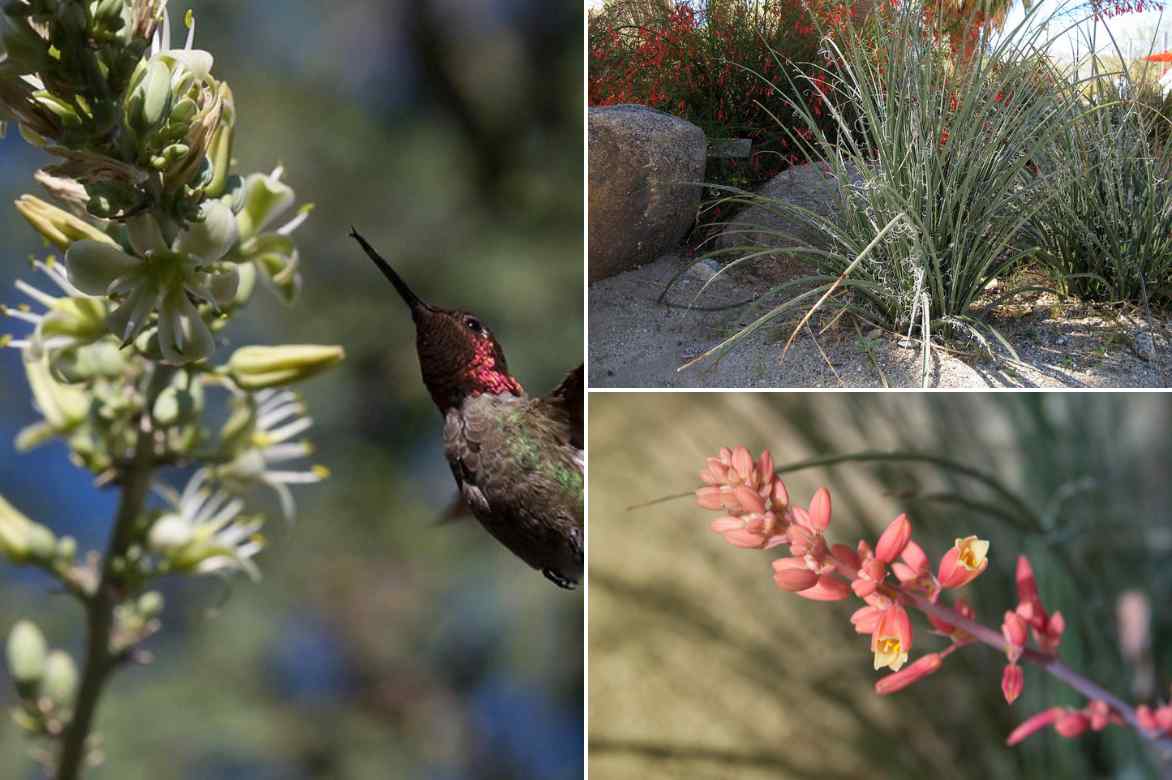
On the left, flowering of Hesperaloe funifera (© Anne Reeves), and on the right, Hesperaloe parviflora: foliage (© Megan Hansen) and flowering.
In the wild, these plants grow in arid environments, mainly in deserts, rocky hills, and dry prairies. They are well adapted to drought, thanks to their succulent leaves that store water and thrive in full sun in well-drained soils.
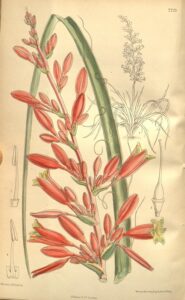
The most cultivated species is Hesperaloe parviflora. The name “parviflora” means “small flower,” referring to the relatively modest size of its tubular flowers, although their abundance and vibrant colour make them very attractive. This species is highly valued for its minimal maintenance and great drought tolerance, making it a popular ornamental plant in dry gardens and rockeries. In addition to its drought resistance, Hesperaloe is also frost-tolerant, withstanding temperatures as low as -15°C, in light, well-drained soils.
The common names for Hesperaloe parviflora include “red yucca,” “false yucca,” or “coral yucca,” due to its resemblance to yuccas and the colour of its flowers.
Hesperaloe is an evergreen perennial plant distinguished by its dense, spreading clump habit. The plant forms a basal rosette of linear, slender leaves, which can reach between 60 cm and 1 metre in length, depending on the species. These leaves are often incurved, rigid, and narrow, with dentate margins and sometimes adorned with white filaments. Their colour ranges from green to blue-green, and they retain their lustre throughout the year.
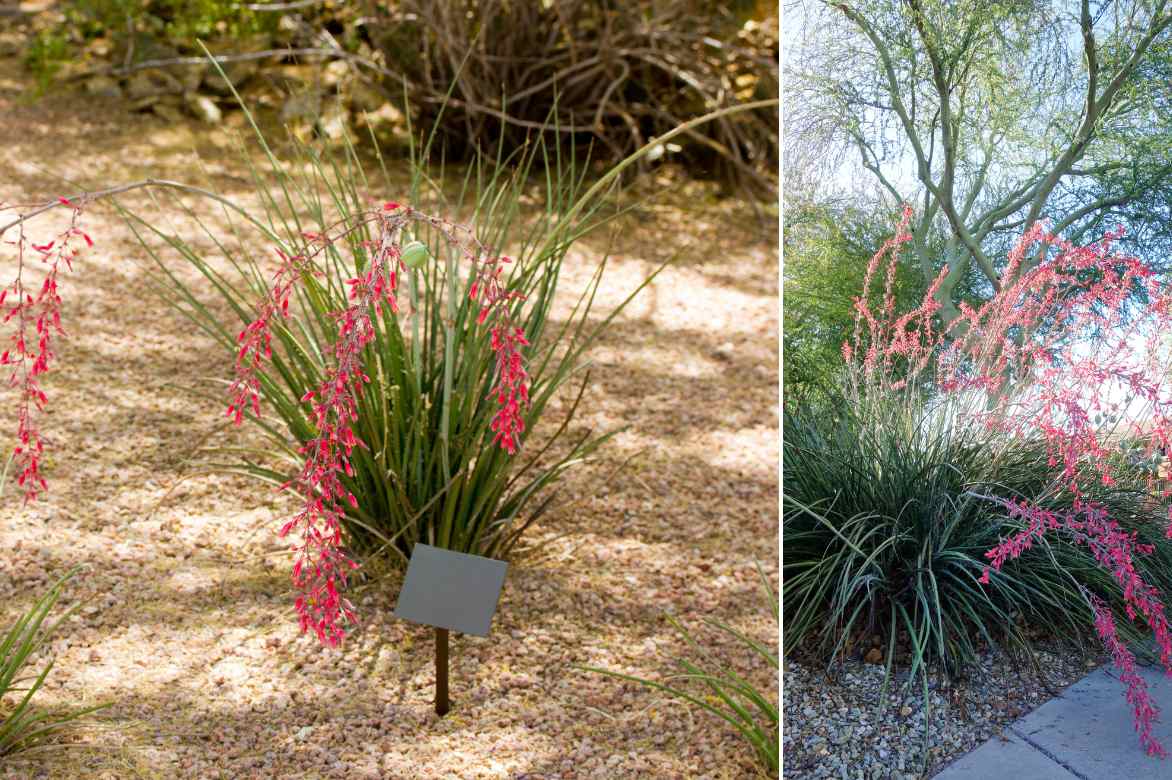
Hesperaloe parviflora: a very pronounced clump habit.
The root system of Hesperaloe consists of fleshy, deep roots, well adapted to capture water in arid soils. These roots allow the plant to withstand drought and stabilise itself in rocky or sandy terrain.
The flowering of Hesperaloe is one of its most remarkable traits. In summer (June to August), the plant produces long flower spikes that rise well above the foliage, occasionally reaching up to 1.5 to 2 metres in height. These spikes are covered with tubular flowers clustered in clusters, with colours ranging from bright red to pink or yellow, depending on the species. The flowers attract many pollinators, including hummingbirds in their natural habitat and bees in our regions.
After flowering, Hesperaloe produces fruit capsules containing numerous small black seeds. These capsules dry and open to release the seeds, which can be harvested for propagation by sowing. The seeds are light and winged, allowing them to disperse with the wind in their natural habitat.
It is worth noting that Hesperaloe is a long-lived perennial, capable of thriving for many years with minimal maintenance.
Hesperaloe is particularly prized for landscaping dry gardens, rockeries, and xerophytic landscapes.
Our finest varieties
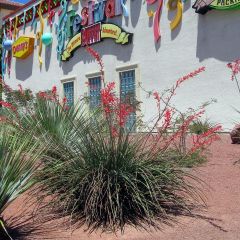
Hesperaloe parviflora - Red Yucca
- Flowering time July to September
- Height at maturity 1,20 m
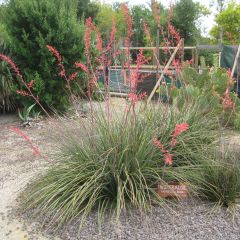
Hesperaloe parviflora Rubra - Red Yucca
- Flowering time July to September
- Height at maturity 1,20 m
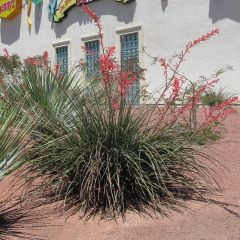
Hesperaloe parviflora Rose des Sables - Red Yucca
- Flowering time July to September
- Height at maturity 1 m
Planting the Hesperaloe
Where to Plant?
The Hesperaloe parviflora is a succulent plant ideal for dry and sunny gardens. Native to the southern United States and Mexico, it thrives in warm and arid climates but can also withstand cooler temperatures down to -15°C. To ensure optimal growth, choose a location in full sun, as this plant loves direct light and tolerates intense heat well.
The soil should be well-drained, light, and low in organic matter. Sandy or rocky soils are perfect, but if your soil is heavier, you can amend it with gravel to improve drainage. Avoid areas where water stagnates, as excess moisture can lead to root rot.
The Hesperaloe thrives in rock gardens, dry gardens, or even in pots on a sunny terrace.
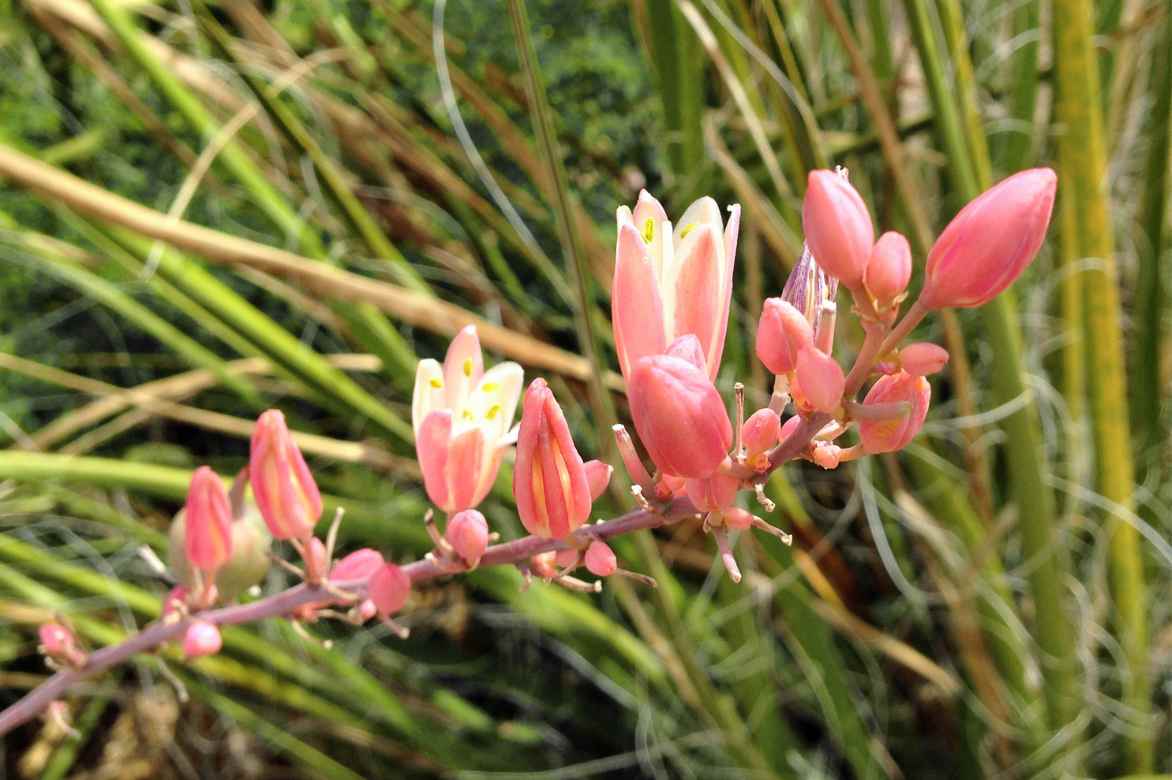
The stunning flowering of the Hesperaloe parviflora.
When to Plant?
Plant the Hesperaloe parviflora in spring (March-April) or late summer (September) to allow it to establish roots well before winter.
How to Plant?
In the Ground
- Dig a hole about twice the size of the plant’s root ball. If your soil is heavy or clayey, mix gravel and compost into the excavated soil to improve drainage.
- Place the plant in the centre of the hole, ensuring the top of the root ball is level with the surrounding soil.
- Fill the hole with the soil and gravel mixture, lightly firming it down with your hands.
- Water thoroughly after planting to help the plant settle and eliminate any “air pockets” between the roots and the soil.
In a Pot
- Choose a container that is wide and deep enough (at least 30 to 40 cm in diameter and depth) with a drainage hole.
- Fill the bottom of the pot with a layer of gravel or clay pebbles to facilitate water drainage.
- Use a well-draining substrate, such as cactus compost or potting soil mixed with sand.
- Place the plant in the centre of the pot, adjusting the height of the root ball so its top is slightly below the rim of the pot.
- Fill the pot with the substrate around the root ball, lightly firming it down, then water moderately to aid rooting.
- Place the pot in a sunny spot and allow the soil to dry out between waterings to avoid excess moisture.
→ Learn more in: Growing Hesperaloe in a Pot.
Care and Maintenance
The care of Hesperaloe parviflora is relatively simple, as it is a very hardy and undemanding plant.
Water it moderately during its growth period in spring and summer, allowing the soil to dry out between waterings. In winter, reduce watering significantly, or even stop it altogether, especially if the plant is grown outdoors.
The red false yucca does not require regular fertilisation, but you can give it a little cactus fertiliser at the beginning of spring to encourage flowering. Fertiliser is more important if you grow it in a pot.
Prune the flower stalks once they have faded to encourage new flowering. Also remove any dry or damaged leaves at the base of the plant to maintain a clean and healthy appearance.
Finally, if you grow Hesperaloe in a pot, remember to repot it every 2-3 years to renew the substrate and provide more space for the roots.
Possible diseases and pests
The _Hesperaloe parviflora_ is generally a disease- and pest-resistant plant, making it an excellent choice for dry, sunny gardens. However, it can be susceptible to a few issues, mainly related to excess moisture. Root rot is the primary risk, especially if the plant is exposed to poorly drained soil or overwatering.
As for pests, the _Hesperaloe_ is rarely attacked, but it can sometimes be targeted by scale insects, particularly when grown indoors or in a greenhouse. Scale insects appear as small white cottony clusters on the leaves. To remove them, you can use a cloth soaked in 70% alcohol to wipe them off manually, or apply an organic insecticidal treatment based on neem oil if the infestation is more severe.
Multiplication of Hesperaloe
Hesperaloes can be propagated mainly by dividing clumps or by sowing.
For division, wait until the plant is well established, usually after several years of growth. In spring, carefully dig up the plant and separate the offsets or new shoots that form around the parent plant. Ensure each division has enough roots to establish itself. Replant these divisions immediately in well-drained soil or in pots and water moderately to aid rooting.
Propagation by sowing is also possible, although slower. Harvest the seeds after flowering and sow them in spring in a light, well-drained substrate. Keep the substrate slightly moist until germination, which may take several weeks. Once the young plants are sufficiently developed, you can transplant them into individual pots or directly into the ground.
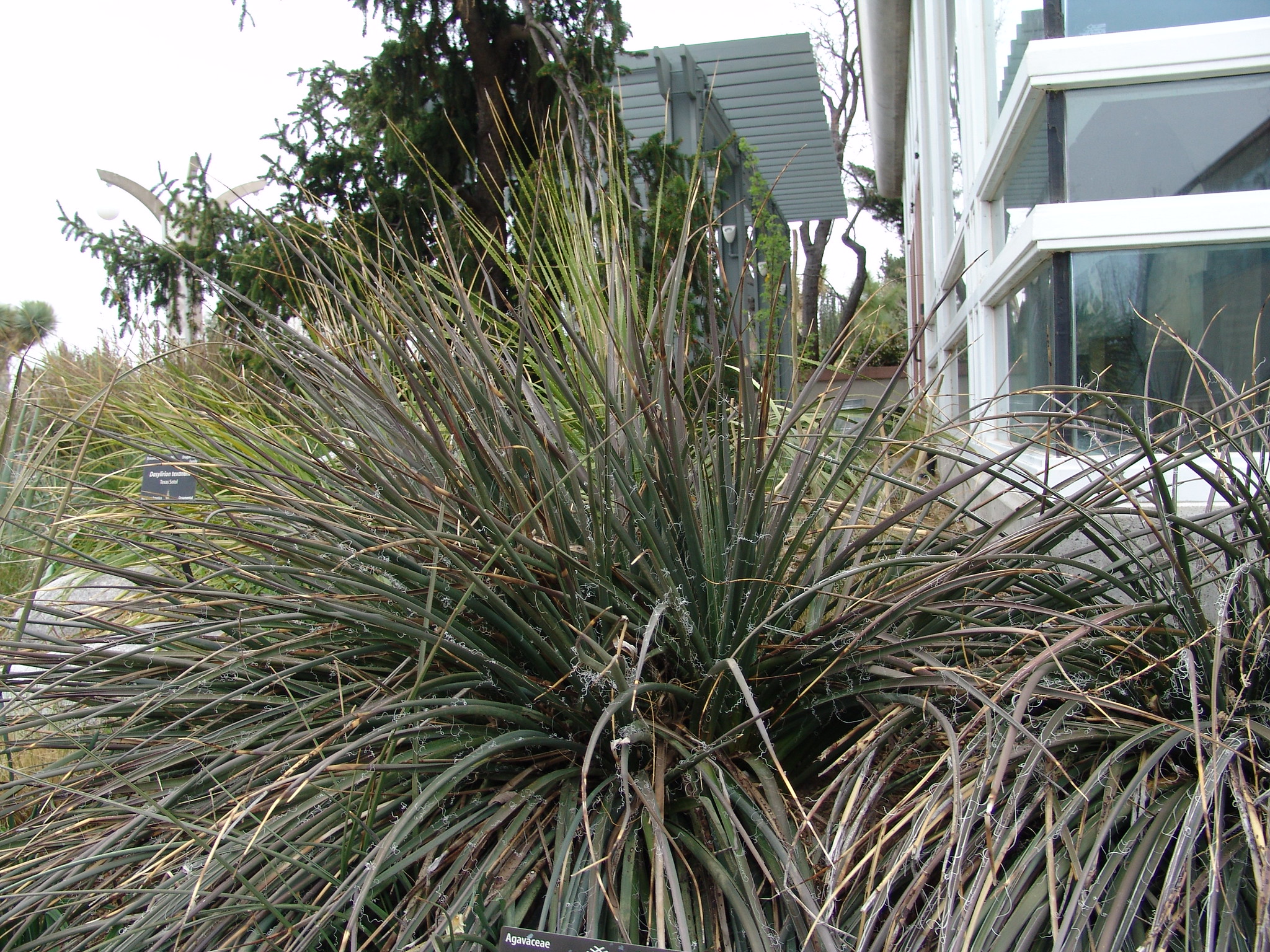
Hesperaloe parviflora at the Denver Botanical Garden (USA) © Drew Avery: the plant deserves dividing clumps when it starts to take up too much space.
Associating Hesperaloe
To create a border around the Hesperaloe parviflora ‘Rose des sables’, choose plants that highlight its slender foliage and spectacular flowering while respecting the soil and sunlight conditions. As companions, consider a few clumps of Kniphofia ‘Banana Popsicle’, also known as Red Hot Poker. This hardy perennial produces spikes of warm yellow flowers, creating a striking contrast with the flowering stems of the Hesperaloe. Its long-lasting flowering and drought tolerance make it an excellent choice.
Among other flowering perennials, blooms in warm tones will echo the Hesperaloe’s flowering. Opt for the Echinacea purpurea ‘Tomato Soup’, with its large red-orange daisy-like flowers, and the Achillea ‘Paprika’, featuring clusters of small red-orange flowers with yellow centres. Peruvian lilies are often overlooked for outdoor planting, but some are hardy enough to withstand winter in well-drained soil: the Alstroemeria aurantiaca is stunning with its yellow-orange flowers.
A few clumps of Stipa tenuifolia, a light and graceful ornamental grass with soft green foliage, will add movement and texture to the border. Its feathery and soft appearance contrasts with the rigidity of the other plants while harmonising with the overall design. In poor, dry soil and full sun, one of the most beautiful grasses in summer and autumn is undoubtedly the Andropogon gerardii ‘Red October’: a must-try!
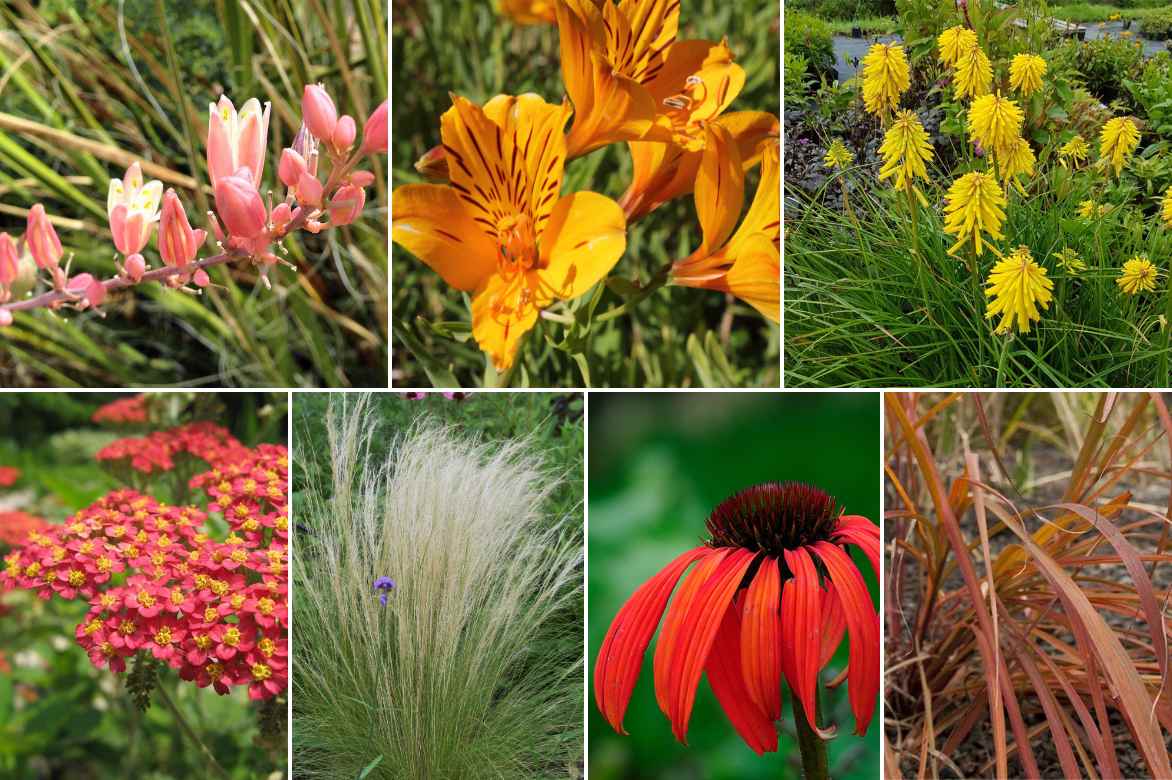
Hesperaloe parviflora, Alstroemeria aurantiaca, Kniphofia ‘Banana Popsicle’, Achillea millefolium ‘Paprika’, Stipa tenuifolia, Echinacea ‘Tomato Soup’, and Andropogon gerardii ‘Red October’.
Also worth reading
→ How to create a dry exotic garden? Follow Gwenaëlle’s expert advice.
→ Discover other hardy plants for a dry exotic garden by reading: 10 hardy plants for a dry exotic garden.
♥ Is your garden sunny and very dry? Don’t worry, there are plenty of plants that thrive in these conditions.
♥ The world of cacti and succulents is vast; explore a wide selection in our online nursery.
- Subscribe!
- Contents
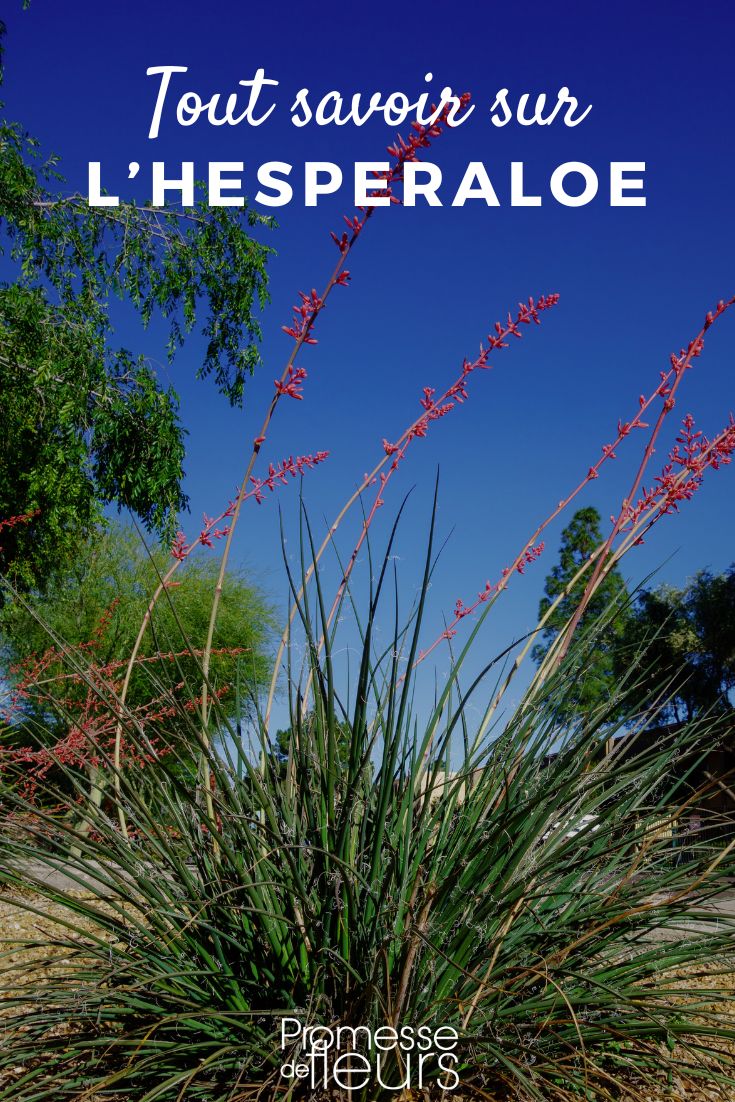































Comments